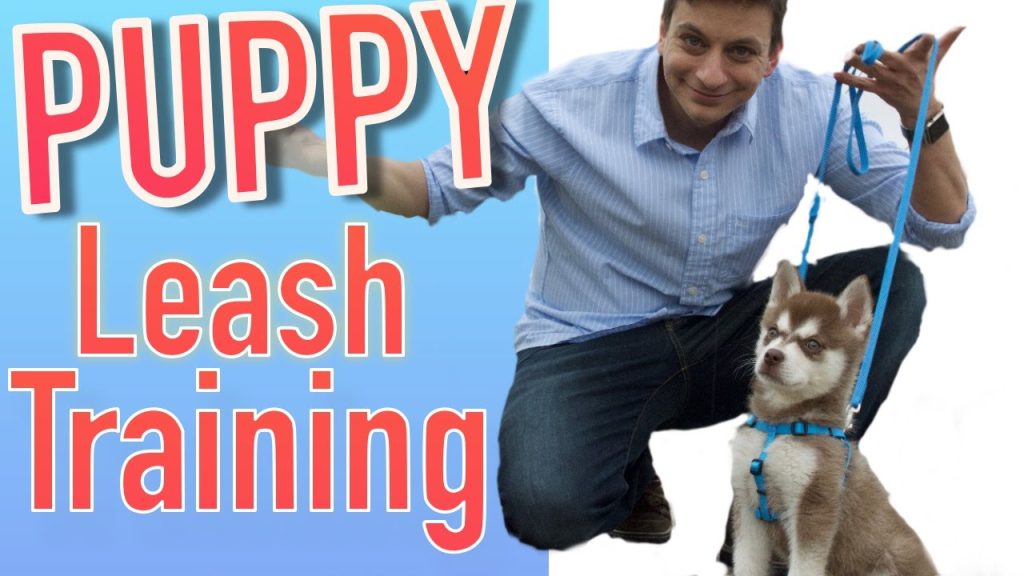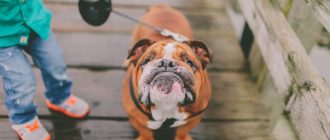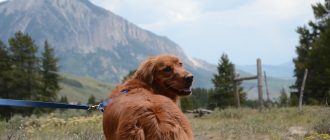Trying to train your dog to walk on a leash without pulling? There’s a simple solution to this problem. A little bit of training goes a long way! Keep reading to find out how long it will take to train your dog to walk without tugging. It’s easier than you think! Listed below are some tips to help you get started. A quick reminder: make sure you have a full treat hand when walking your dog. When your dog starts pulling, stop and call his name. Put the loaded hand in front of his nose and continue to walk a little bit farther.
Why does my dog always pull on the leash?
One of the biggest complaints that trainers hear from dog owners is: “My dog always pulls on the leash!” This can be a symptom of a deeper problem. For example, your dog might be anxious about meeting a new dog or if it feels threatened around another dog. In either case, your dog is likely trying to get what it wants, whether it is attention or food.
In order to eliminate the problem, you need to understand why your dog is pulling on the leash in the first place. Leashes that are too tight are dangerous, and pressure on the collar or harness can cause the dog to pull harder. Once you know the real cause of the behavior, you can take steps to correct it. Often, your dog is simply trying to get to somewhere that is more satisfying than the pain.

How do I get my dog to stop pulling on the leash?
One of the first steps in training your dog to walk on a leash without pulling is to always reward good behavior. Start by giving treats every time your dog walks without pulling. Then, gradually reduce the frequency of treats and space them out over longer distances. You can also use the be a tree tip when your dog is pulling. This way, he will learn to stop pulling when he hears you say “let’s go!”
Top-10 Dog Leashes
| Image | Price | Buy | Prime | Title |
|---|---|---|---|---|
 Top Top | Buy on Amazon | PrimeEligible | TUG 360° Tangle-Free Retractable Dog Leash | 16 ft Strong Nylon Tape | One-Handed Brake, Pause, Lock (Medium, White) | |
 Top Top | Buy on Amazon | PrimeEligible | BAAPET 2/4/5/6 FT Dog Leash with Comfortable Padded Handle and Highly Reflective Threads for Small Medium and Large Dogs (5FT-1/2'', Black) | |
 Top Top | Buy on Amazon | PrimeEligible | Fida Retractable Dog Leash, 16 ft Dog Walking Leash for Small Dogs up to 26 lbs, 360° Tangle Free, Black | |
 Top Top | Buy on Amazon | PrimeEligible | iYoShop Hands Free Dog Leash with Zipper Pouch, Dual Padded Handles and Durable Bungee for Walking, Jogging and Running Your Dog (Large, 25-120 lbs, Black) | |
 Top Top | Buy on Amazon | PrimeEligible | Mighty Paw Retractable Dog Leash 2.0 | 16' Heavy Duty Reflective Nylon Tape Lead for Pets up to 110lbs. Tangle Free Design W/One Touch Quick-Lock Braking System & Anti-Slip Handle (Green/Lite) |
As an Amazon Associate we earn from qualifying purchases.
A loose leash can cause discomfort for your dog, so be sure to reward good behavior with a treat when it approaches your body. As your dog approaches you, release the leash and give it a treat next to his preferred side. Reward the behavior as often as possible, but only when it doesn’t cause you any pain. If your dog starts to pull too much, give the treat again when you let it slack.
How long does it take to train a dog not to pull?
When walking your dog, use a treat to reward it when it does not pull on the leash. Don’t just give it the treat every time it walks forward; it should be rewarded when it turns around and comes to you. The next step is to gradually space out the treats as your dog becomes accustomed to the behavior. This is important, because some dogs will not respond to the leash correction immediately.
One of the most common causes of dog pulling is the fear of being on the leash, so it’s important to start training him from an early age. By making leash training fun, he’ll eventually stop pulling instinctively. Using positive reinforcement methods, you can prevent and even reverse the behavior. You can also use your newfound skill to teach your dog other commands like sitting, heeling, and nodding.
How do I get my dog to walk nicely on a leash?
One of the first steps to training your dog to walk nicely on a leash is to avoid giving your pup any extra incentive to pull the leash. A well-behaved dog will be more likely to obey your command when you ask him what he wants. The best way to teach your dog to walk nicely on a leash without pulling is to use rewards. One of the easiest ways to train your dog to walk nicely on a leash without tugging is to reward your dog whenever it does the right things for you.
To teach your dog to walk nicely on a leash, you should attach the training collar to your dog’s live ring. Then, place the loop of the leash over your thumb and fist. Once your dog has mastered this command, you can move on to different environments and teach him to walk nicely in the presence of other distractions. Make sure to keep practicing with your dog until he understands the concept of no-pulling and can walk nicely without tugging on the leash.
How to stop leash pulling in 5 minutes?
Leash-pulling is a common problem that many dogs experience. While it is irritating for the owner, the pressure that the leash puts on the dog’s neck and windpipe can be dangerous. Fortunately, there is an easy solution for leash-pulling dogs: a no-pull harness. Attached in front, it will prevent up to 80% of pulling within 5 minutes.
To train your dog to stop leash-pulling, begin with the behavior itself. First, you need to give your dog a treat. As soon as your dog starts sniffing at your legs or back, turn around and place yourself behind the dog. Repeat this process repeatedly until the dog stops pulling on the leash. After a few minutes, you will soon see that your dog no longer pulls on the leash.

Train Dog to Walk on a Leash Without Tugging
If you want to stop your dog from tugging on the leash, here are some tips to help you achieve this goal. If your dog has been tugging the leash, you can try the Feeding Tree to encourage him to behave properly. This reward system should be used indoors with the Sweet Spot as a reward. This method will work best when combined with another training technique. You can also try a combination of these two.
Can you hurt your dog by pulling on the leash?
Can you hurt your dog by pulling on the lead? The answer is yes! If you don’t grip your dog’s collar correctly, your fingers, wrists, and elbows can get injured. These injuries are most common when dogs pull on the leash and overexcite. A quick check of your dog’s leash and collar will reveal any broken bones or tendons. Here are some ways to prevent these injuries from happening.
The first step is to always make sure your leash has a nice bend to it. A nice bend in the leash relieves the strain on your arms, shoulders, and dog’s neck. A taut leash is uncomfortable for the dog and can cause trachea problems. Secondly, a loose leash can improve your dog’s relationship with you should always make sure your leash is a good bend, not taut.
Should you drag a dog on a leash?
You may have heard the question: Should you drag a dog on a lead? But dragging a dog is actually against the rules of dog training. The dog cannot disengage from a point of interest, such as a cat or a squirrel, unless you use your hands to pull it. This type of pulling is called the opposition reflex and is a big no-no for dog owners.
You should start by making sure that the leash you choose for your dog is a proper fit. It should be six to ten feet long and wide enough to prevent friction burn. It should also be light enough for your dog to wear. Leashes that are longer than this can be used only when you’ve trained the dog well. When choosing a leash for your dog, make sure that both the collar and the leash are in good condition and free from any damages. Also, make sure the clip connecting the collar and leash is secure and tight. Wipe the collar and leash clean after use. Any dirt on them will be irritating to your dog.
Do puppies grow out of pulling?
While it may seem like a bad habit to break, dogs naturally pull on the leash because it is their way of getting where they want to go, at their own pace. The only time they are trying to be dominant is when you give in and let them walk behind you, which rewards them for pulling. A chest-led harness will stop them from pulling when they reach a certain point.
If you find that your puppy is pulling on the leash, try focusing on where you are going instead of where you’re going. This will help you to make your way in the direction you’re going. It will also help if you have plenty of treats and a favorite toy with you, as dogs are not likely to learn the new direction unless they are bribed.
Should you let your dog sniff while walking?
Taking your dog for a walk provides both exercise and the opportunity to sniff different objects. Many dogs enjoy the exercise and the opportunity to explore their surroundings, while others enjoy the chance to sniff things every second or so. Frequent sniffing may extend your walk, and some people may not like the constant stoppages. Although dogs have the same five senses as humans, their sense of smell is stronger. It’s better to let your dog sniff a new place once in awhile rather than to punish it when it starts to stop.
In addition to helping your dog burn off pent-up energy, letting your dog sniff while walking is an excellent way to socialise and relieve boredom. It can even reduce the risk of cognitive decline. Another benefit of letting your dog sniff while walking is the mental workout. This activity helps your dog become more relaxed and less likely to engage in destructive or problem behaviors. And, it helps you get some exercise too!
Should you force a dog to walk?
It’s possible to train your dog to walk on a leash without the need to tug. The first step is to find a place where there’s no distraction. A location that’s relatively quiet will be ideal, since your dog will be less likely to be distracted by other distractions, such as other dogs. Another option is to reward your dog for good behavior every time you walk your dog on a leash. This can help you to curb your dog’s social media enthusiasm.
The next step in training your dog to walk on a leash without pulling is to introduce treats as rewards. Make sure to give treats to your dog whenever he shows signs of good behavior. If he doesn’t give in to your call or attention, give him a treat. After the treat, move to the end of the leash and reward your dog for a good behavior. Repeat this process as often as you can.













